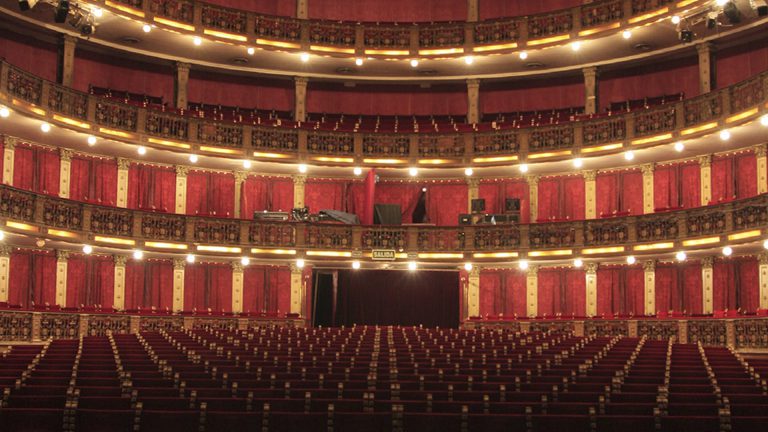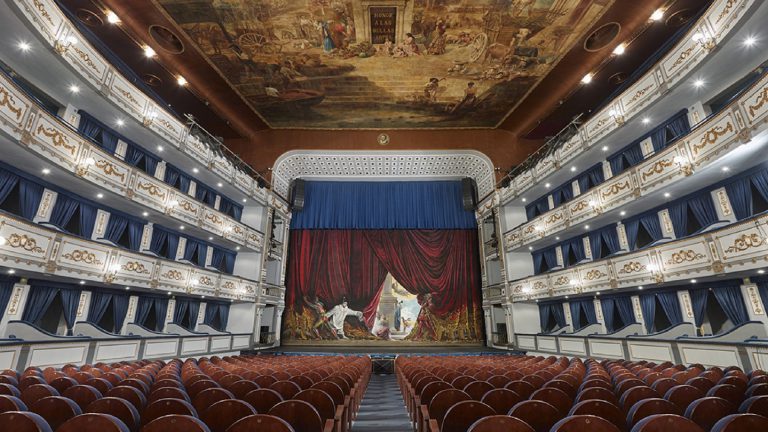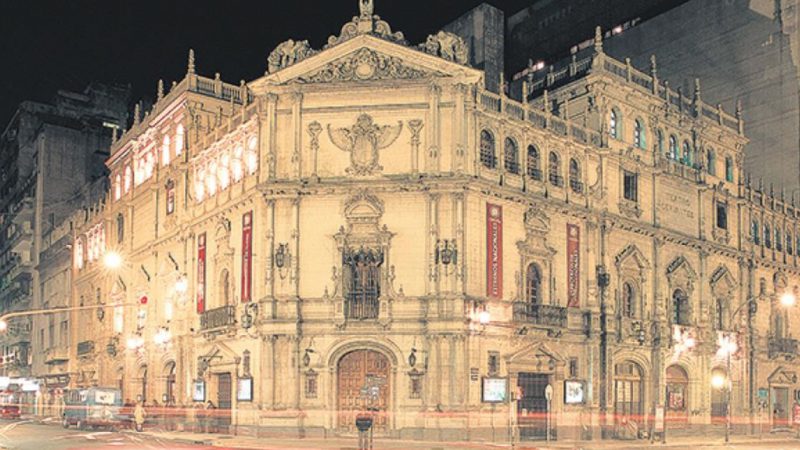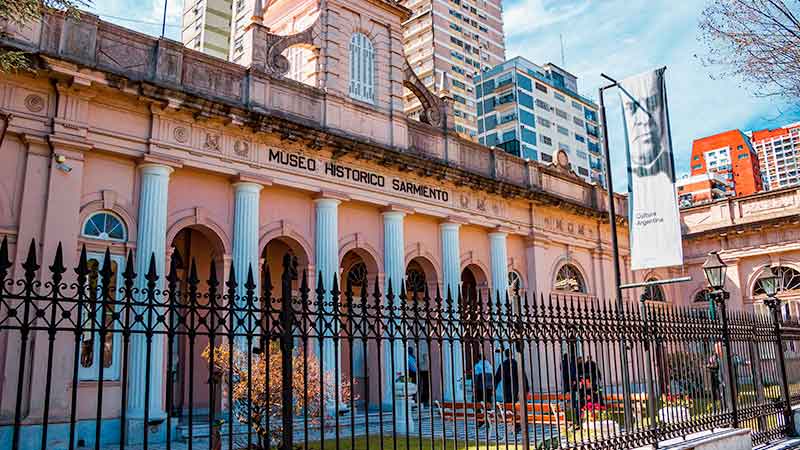Located on the corner of Córdoba and Libertad, the Cervantes National Theater was declared a National Historic Monument for its relevant role in the country's culture and for being one of the most emblematic architectural jewels of Buenos Aires. Besides being an immortal reference of our theater scene, the Cervantes is a piece of art in itself worthy of being admired. His ornaments were made in ten cities in Spain: tiles and damasks in Valencia; the red tiles for the floor in Tarragona; the doors for the boxes in Ronda; the seats for the stalls, cabinets, mirrors, benches, railings and fittings in Seville; the lanterns, lamps and lanterns in Lucerne; fresco painting for the ceiling in Barcelona; the bars, copied from El Greco's house in Toledo; the tapestries, curtains and the mouth curtain -which represented the coat of arms of the City of Buenos Aires- embroidered in silk and gold and made by the Royal Tapestry Factory in Madrid.

The theater has three rooms and the main one is named María Guerrero after its founder: an actress, stage director, artist teacher and inspiring muse of the playwrights of her time who arrived in Buenos Aires from Spain in 1897, heading the company that directed with her husband.
The general capacity of the Cervantes is 860 spectators and 348 can enter its main stalls. The Orestes Caviglia room, installed where the confectionery used to work, can hold 150 people and is ideal for shows that must be filmed or transmitted because it is prepared to install cameras . The Luisa Vehil room, more versatile, can be adapted to different events because it does not have a stage or stalls. It is inspired by the María Luisa room in the Palacio de Oriente in Madrid and is known as the “Golden Room” because all its decoration has a leaf gold finish.

Photos:
mundoclasico.cienradios.com
Teatrocervantes.gob.ar



